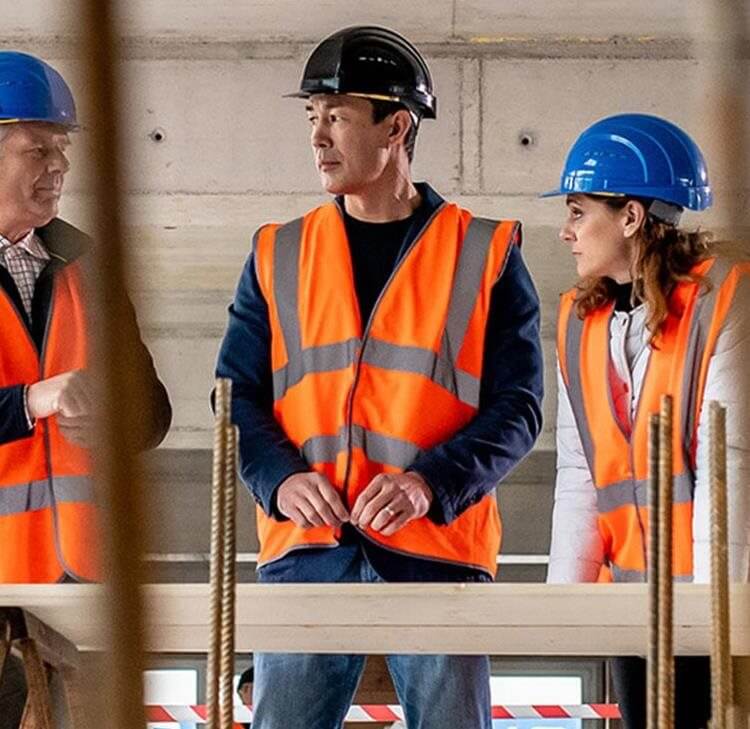This is our third article regarding the Building Safety Act 2022, which received Royal Assent on 28 April 2022 (the Act).
In our first article we considered two elements of the Act which affect buildings completed prior to the Act coming into force as law, being
- the extension of limitation periods in relation to cladding products and under the Defective Premises Act; and
- Building Liability Orders.
In our second article we considered those elements of the Act which impact on the design and construction of buildings commenced after the Act comes into force as law. In particular, we considered the role of the new Building Safety Regulator and the new “gateway” regime.
In this article, we consider the impact of the Act for the owners and occupants of higher-risk buildings, and the extent to which the Act fulfils its wider objectives.
In particular, we’ll consider the role of the new Accountable Person, the duties imposed on occupants and the right of landlords to recover certain building safety costs from leaseholders. By way of reminder:
- whilst the Act has received Royal Assent, it’s not yet in force; and
- we’ll be holding a seminar in the early summer to discuss the issues raised by the Act in greater detail.
Higher-risk buildings
As discussed in our second article, one of the primary functions of the new Building Safety Regulator (Regulator) is to implement the new regulatory regime introduced by the Act for the design, construction and occupation of what are defined as “higher-risk buildings”.
The Act contains two definitions of higher-risk buildings, which will apply to buildings in England only. The Welsh Ministers have the power to enact a different definition of higher-risk buildings in Wales.
What is a higher-risk building under the Act?
A “higher-risk building” is defined differently for the purposes of Parts 3 and 4 of the Act. This article is concerned with Part 4 only, which creates the role of the “accountable person” and introduces new duties for the owners and occupiers of higher- risk buildings. For the purposes of Part 4, a higher-risk building is defined as a building in England which:
- is at least 18 metres in height or has at least 7 storeys; and
- contains at least two residential units.
The draft Higher-Risk Buildings (Descriptions and Supplementary Provisions) Regulations (Higher- Risk Buildings Regulations) exclude certain types of building from the definition of “higher-risk buildings” for the purposes of Part 4 of the Act, including:
- care homes;
- hospitals;
- secure residential institutions;
- temporary leisure establishments; and
- military premises.
These exclusions are intended to limit the application of Part 4 of the Act predominantly to residential buildings only.
There is currently no exclusion for mixed use buildings, or those occupied for educational purposes.
It remains that, for the reasons explained in our second article, we expect the definition of higher-risk buildings will change over time, possibly to include a lower height threshold and a broader range of buildings that are occupied overnight.
Higher-risk buildings during occupation
Part 4 of the Act introduces the role of the “accountable person” and imposes duties on residents and owners of residential units in relation to higher-risk buildings.
The accountable person
An accountable person may be an individual, partnership or corporate body and during the occupation of a high-risk building is the equivalent of a “dutyholder” during the design and construction phase.
If there is more than one accountable person for a building, one must be identified as the “principal accountable person”.
Initially, the accountable person must register the building with the Regulator (to include retrospective registration for existing high-risk buildings which are occupied) as a building cannot be occupied until it has been registered.
Post-registration and following receipt of a request from the Regulator, the accountable person is required to apply for and obtain a Building Assessment Certificate. The Act does not set out the timescale within in which the Regulator is required to make a request for an application for a Building Assessment Certificate.
Whilst subject to change, the explanatory notes to the Act state that in relation to:
- a new building, the Regulator will issue requests “within a defined period following occupation”; and
- existing buildings, the Regulator will issue requests over a five- year period with priority given to those buildings that are deemed to present the greatest danger in terms of height or other risk factors.
The Regulator will issue a Building Assessment Certificate if it is satisfied that the accountable person is complying with all applicable statutory obligations in relation to the building. These obligations include:
- assessing building safety risks in relation to the building;
- taking all reasonable steps to prevent the occurrence, and control the impact of, any major incident resulting from building safety risks in or around the building;
- complying with certain “prescribed principles”,which are not defined in the Act and will be introduced via secondary legislation;
- complying with obligations in relation to resident engagement and participation, complaints handling, information provision and the role of residents in helping keep the building safe;
- compiling and maintaining a Safety Case Report, which is a document demonstrating the building is safe for occupation and is to be submitted to the Regulator on request; and
- compiling and maintaining a Resident’s Engagement Strategy, which may include information about how a complaints process for residents operates or how residents access all relevant safety information.
These obligations are on-going and mean the role of the accountable person is likely to prove expensive and onerous.
An accountable person must, for example, “take all reasonable steps” to prevent “a building safety risk materialising as regards the part of the building for which they are responsible” and to reduce “the severity of any incident resulting from such a risk materialising”.
Those steps “must be taken promptly” and may necessitate the accountable person carrying out works to the building.
We interpret this to mean that if cladding is discovered to be unsafe for fire safety reasons, the accountable person would be obliged to replace that cladding promptly and, as we discuss below, the cost of carrying out works will not always be recoverable from the occupants of the building.
The Regulator can take enforcement action against an accountable person for non- compliance, which can include for example, issuing a compliance notice if the Safety Case Report is inadequate with a failure to comply with the notice being a criminal offence.
Resident’s duties
The Act defines a resident or owner of residential units in
higher-risk buildings as a “Relevant Person” and duties are imposed on every Relevant Person to:
- not act in a way that creates a significant risk of a building safety risk materialising;
- not interfere with safety equipment that is in the common parts of the building; and
- comply with any request made by an accountable person in connection with that person’s duty to assess safety risks in the building and to take steps to prevent serious harm.
If a Relevant Person contravenes these duties, the accountable person is empowered to give a contravention notice specifying the steps to be taken by the Relevant Person.
This may include requiring payment of any sum necessary to repair or replace a “relevant safety item” as a result of the contravention.
Should the Relevant Person fail to comply with the contravention notice, the accountable person may apply to court for an order giving effect to the notice.
The consequences of further non-compliance have yet to be published.
In our view, the imposition of duties on residents and owners of residential units and the vesting of such extensive power in the accountable person may prove problematic.
As currently drafted, the duties are subjective. Unless the detail of the duties is prescribed, we can see the potential for disputes as to whether a Relevant Person has complied with the duties in a practical sense.
Further, whilst the accountable person is obliged to make documentation and information available to residents and owners of residential units, there is seemingly no duty to ensure that those persons are educated in relation to building safety risks and safety equipment.
In some instances, such education could be crucial in empowering residents and owners of residential units to confidently comply with the duties imposed by the Act and prevent inadvertent contraventions. Relevant Persons will need to monitor this issue carefully.
Landlord’s right to recover costs relating to building safety
The cost to higher-risk building owners of complying with the initial and on-going requirements of the Act is likely to be significant.
The Act introduces the right for landlords of leasehold dwellings in higher-risk buildings to recover certain costs relating to building safety from the leaseholders where:
- the costs are incurred in relation to the taking of “building safety measures” as defined in what will become s. 30D(4), Landlord and Tenant Act 1985;
- the lease was granted for a fixed term of seven years or over; and
- the leaseholder is liable to pay a service charge.
The term “building safety measures” is defined to include all functions of the role of accountable person as explained above, plus legal and other professional fees, fees payable to the Regulator and “management costs”.
Our understanding is that this is intended to cover the administrative costs and expenses of the accountable person, and excludes the cost of carrying out work to the part of the building for which the account person is responsible.
The government has stated the average monthly cost to a leaseholder is estimated to be between £9 and £26.
We fear the actual cost may prove to be much more; the management costs charged by property management companies have long been criticised as being excessive and are one of the reasons for the government’s current push for leasehold reform in England.
The Act does not impose any limitation on or prescribe the management costs which may be charged to leaseholders in relation to the taking of building safety measures.
Therefore, our concern is that landlords and property management companies may see the right to recover such costs as an opportunity to profit from the new regulatory regime.
From a leaseholder’s perspective, the Act imposes more robust safeguards in relation to the costs associated with the remediation of defects in works carried out in the 30-year period prior to the relevant provisions of the Act coming into force, and which cause a building safety risk.
The landlord will be unable to claim remediation costs from leaseholders by way of service charge if:
- the costs relate to a defect for which the landlord or an associate of the landlord is responsible;
- the landlord satisfies the “contribution condition”, which is effectively a metric to determine whether the landlord’s group net worth is sufficient to cover the remediation cost;
- the value of any “qualifying lease” is less than £325,000 in relation to a property in Greater London, or less than £175,000 elsewhere; or
- the remediation cost involves the removal or replacement of any part of a cladding system that forms the outer wall of an external wall system and is unsafe.
It follows there is a blanket prohibition on landlords recovering from leaseholders the cost of removing and replacing an unsafe external cladding system.
This will not in principle prevent a landlord from claiming the cost from any contractor or designer which specified the use of the cladding system in breach of contract or negligently.
In any case where the landlord is entitled to claim remediation costs from leaseholders by way of service charge:
- the cost must not exceed the “permitted maximum”, which ranges from £10,000 for properties outside Greater London to £100,000 where the value of the qualifying lease exceeds £2 million; and
- the cost cannot include any legal or other professional service fees incurred by the landlord in relation to liability for the relevant defect.
These restrictions only apply in relation to buildings which contain at least two dwellings and:
- are at least 11 metres high; or
- have at least five storeys.
This means there are many buildings in England for which, unfortunately, the landlord will potentially be able to claim remediation costs from leaseholders.
That said, the most high profile issue affecting the fire safety of higher-risk buildings is of course the use of unsafe external cladding systems.
Given the inability of landlords to recover from leaseholders the cost of removing and replacing such systems, it remains to be seen what other remediation costs landlords may seek to recover from leaseholders.
In the meantime, the true financial impact of the Act for leaseholders cannot be determined.
New Homes Ombudsman
Act also sets out the framework for a New Homes Ombudsman scheme, aimed at providing a forum for owners of newly built homes to seek redress against developers and builders.
The Act empowers the government to develop a scheme which will:
- require developers, or developers of a specified description, to join the New Homes Ombudsman scheme;
- introduce a code of practice identifying the standards of conduct and levels of workmanship that are expected from a member; and
- set sanctions for breach.
It is expected that the scheme will come into force within 12 - 18 months of 28 April 2022.
In our view this is optimistic given no detailed proposals have been published in relation to the scheme, let alone any formal steps taken to form the Ombudsman as an organisation.
Conclusion
The Act is clearly ambitious in scope and offers real potential to resolve the lack of accountability in the industry for ensuring compliance with the Building Regulations and providing comprehensive information to residents in relation to building safety risks.
Whilst the government is to be applauded for having taken at least the preliminary steps necessary to address these longstanding issues, it’s unclear how effective the Act will be in practice.
Fundamentally, the Act has made no changes to the substance of the Building Regulations. As explained in our first article, confusion in relation to certain parts of the Building Regulations has led to issues with the design, construction and signing off of buildings.
Clearer guidance is required if the Building Regulations are to succeed in ensuring quality and safety in construction.
Further, there is significant further work to be done by government to facilitate the day to day functioning of the initiatives introduced by the Act.
As much of this is expected to be achieved through the introduction of secondary legislation, a further 12 -18 months is likely to pass before the full scope of the new regulatory landscape can be properly understood. Even this may prove an optimistic timescale.
In the meantime, wide-ranging concerns have been voiced by the industry regarding the potential impact on the construction and property sectors as the provisions of the Act evolve through the publication of secondary legislation.
The CIC, for example, has expressed concern that the “huge increase in level and extent of liability” for contractors, construction professionals and developers could force SMEs out of housing development, with the insurance sector potentially concluding that it should walk away from construction.
As a consequence, the CIC observes:
“It will be necessary for state intervention to ensure the provision of PII to suitably competent and experienced engineers and others taking on liability for fire safety relating to the necessary remedial works being undertaken via the building safety fund if commercial market insurers continue to insist on excluding cover for fire safety… If government does not intervene, we are concerned that work for the building safety fund will either
- grind to a halt because no- one has fire safety cover or
- only the largest businesses with buying power/self-insurance will be able to carry out the work, putting good SME practices at a disadvantage.
We are at a point where perfectly competent people are being excluded from providing services due to the risk aversion of the insurance sector”.
Although the concerns of the CIC are to some extent justified, it remains to be seen how the insurance market will react to the Act.
In the past many insurers have been wary of insuring risks in the construction sector given the long history of not only major insurance claims for the reasons set out above.
Our view is that the Act should go at least some way to addressing those concerns. This does, however, need to be weighed against:
- in the short term, the potential for additional claims to be brought in relation to, for example, legacy developments (as discussed in our first article); and
- in the medium to long term, the extent to which the increased extent and level of liability introduced by the Act may increase insurance costs for the construction sector.
In any event, early indications are that the market’s reaction to the Act is less extreme than some anticipated.
Contact

Tim Claremont
Partner
tim.claremont@brownejacobson.com
+44 (0)20 7871 8507

Gavin Hoccom
Partner
Gavin.Hoccom@brownejacobson.com
+44 (0)330 045 2384









































